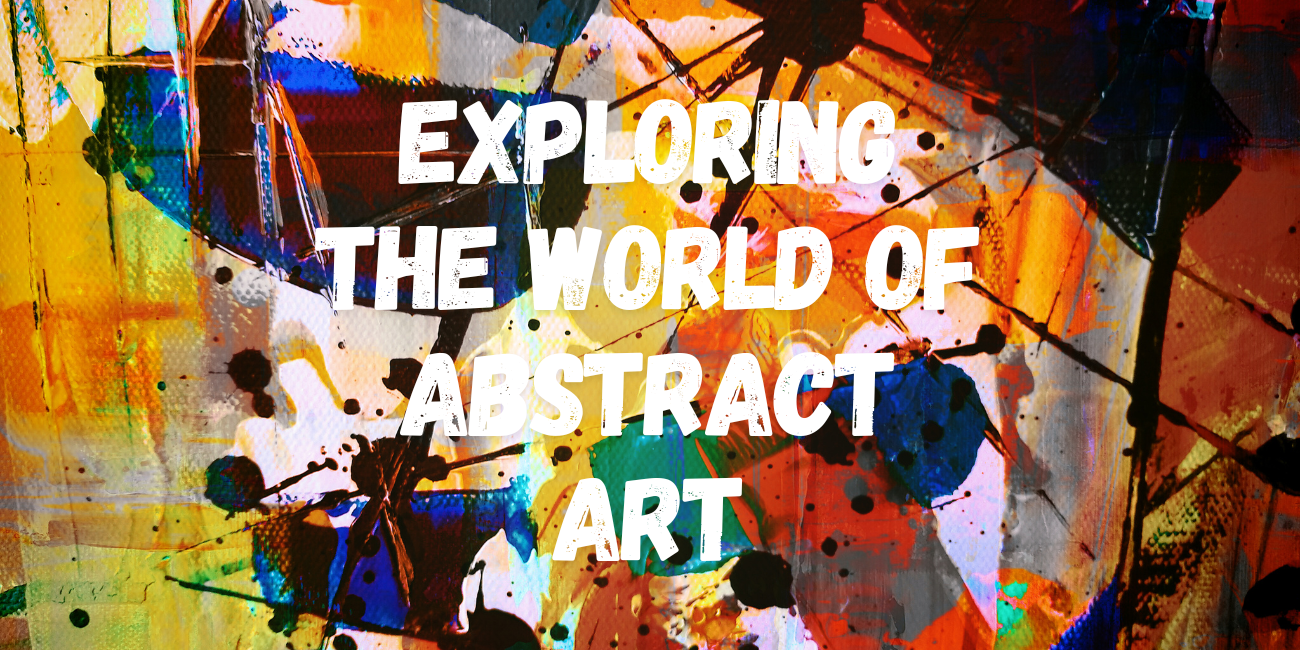
Exploring the World of Abstract Art
Abstract art has long fascinated and perplexed audiences with its bold use of color, form, and texture. Unlike traditional art that seeks to represent reality, abstract art aims to evoke emotions, provoke thought, and explore the essence of the visual experience. This blog delves into the captivating world of abstract art, exploring its history, significance, and how you can appreciate and even create your own abstract masterpieces.
The Origins and Evolution of Abstract Art
Breaking Away from Tradition:
- Abstract art emerged in the early 20th century as artists began to move away from realistic representations. Influenced by movements like Cubism and Futurism, abstract artists sought to capture the essence of their subjects rather than their literal appearance.
Example: Wassily Kandinsky, often considered the father of abstract art, believed that art should express the inner emotions and spirituality of the artist. His works are characterized by bold colors, geometric shapes, and dynamic compositions.
The Power of Abstraction:
- Abstract art strips away the details to focus on the fundamental elements of art: line, shape, color, and texture. This reduction allows for a deeper exploration of artistic expression and personal interpretation.
Tip: Consider how abstract art can convey complex emotions and ideas through simple forms and colors. What feelings or thoughts do these elements evoke in you?
Appreciating Abstract Art
Open Interpretation:
- One of the most intriguing aspects of abstract art is its openness to interpretation. Unlike realistic art, which has a clear subject, abstract art invites viewers to find their own meaning and connection.
Example: Mark Rothko's color field paintings, with their large blocks of color, create a meditative experience that encourages viewers to reflect on their own emotions and memories.
Emotional Resonance:
- Abstract art often evokes strong emotional responses. The use of color and form can elicit feelings of joy, sadness, excitement, or calm. It's this emotional power that makes abstract art so compelling.
Tip: When viewing abstract art, take your time to observe the interplay of colors, shapes, and textures. Allow yourself to feel and respond to the artwork on an emotional level.
Creating Your Own Abstract Art
Express Yourself:
- Creating abstract art is a liberating experience that allows for personal expression without the constraints of realism. Start with simple materials like paper, canvas, acrylic paints, and brushes. Experiment with different techniques, such as pouring, splattering, or layering colors.
Example: Jackson Pollock's drip paintings are a famous example of abstract expressionism, where the act of painting itself becomes an expressive and dynamic performance.
Find Inspiration:
- Inspiration for abstract art can come from anywhere—nature, music, emotions, or even other artworks. Allow yourself to be influenced by your surroundings and inner thoughts.
Tip: Try creating an abstract piece inspired by a piece of music. Let the rhythm, melody, and mood of the music guide your brushstrokes and color choices.
Conclusion: The Endless Possibilities of Abstract Art
Abstract art offers a unique and boundless realm of creativity and expression. Whether you are an artist or an appreciator, it challenges you to see beyond the surface and explore the deeper layers of meaning and emotion.
Remember, the beauty of abstract art lies in its ability to transcend the literal and connect us to the intangible aspects of our human experience. Embrace the freedom, the mystery, and the profound impact of abstract art in your creative journey.
Stay updated and connected with Wainsy on social media:
Facebook: Follow us on Facebook
Instagram: Follow us on Instagram
YouTube: Subscribe to our YouTube channel
LinkedIn: Connect with us on LinkedIn